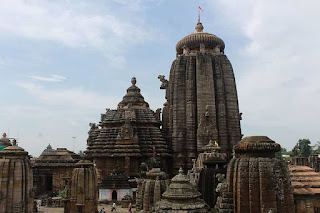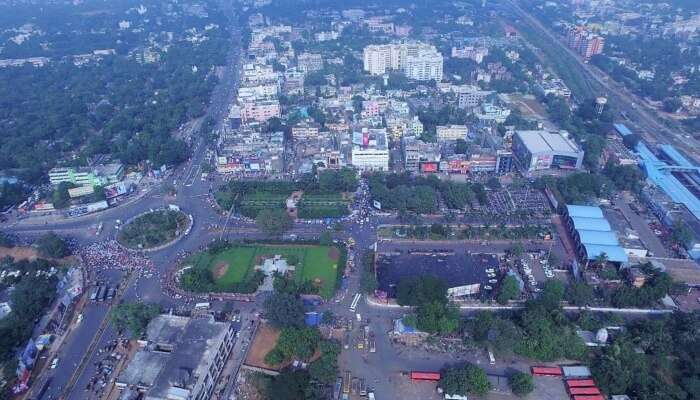Whether you hold the mythologies to be true or not, one thing you cannot deny is that India is an ancient land. If not more, then the country has at least 5000 years of written history, beginning from the Indus Valley (Harappan) Civilisation, itself dating from at least 3300 BC. There are several cities in India that bear marks of continuous human inhabitation of more than a millennium. One such city is Bhubaneswar in Odisha, every nook and corner of which boasts a long and rich history. Its major attractions and reminders of the glorious past are its monumental Kalinga architecture temples that have earned it the name, “Temple City of India” or “The City of Temples”. Read on for some of these incredible places to visit in and around Bhubaneswar:
1. Lingaraja Temple, Bhubaneswar
The largest Hindu shrine in Bhubaneswar, Lingaraja Temple, in its present form, dates from the 11th century. The temple complex has four main sections: Vimana (sanctum), Jagamohana (hall of assembly), Natamandira (hall of events) and Bhoga Mandapa (hall of offerings). All these are arranged in a straight line, and each has a tower, higher than the one preceding it. The main feature of the complex is its almost 148-feet high sanctum tower, every bit of which carries ornate sculpting. Not only the tower, but the walls of Bhoga Mandapa also contain sculptures.
 |
| Lingaraja temple in Bhubaneswar |
2. Rajarani Temple, Bhubaneswar
Similar to Lingaraja Temple, though smaller, Rajarani Temple is yet another great example of the 11th-century Kalinga architecture. One more feature, which sets it apart from the former shrine, is that it only has two structures instead of four as it was constructed several decades earlier. The sculptures here depict the marriage of Lord Shiva and Goddess Parvati, and also women going about their daily chores.
 |
| Rajarani Temple |
3. Parashurameshwar Temple, Bhubaneswar
The evidence of it being constructed much earlier than the two above-mentioned shrines is evident in its even smaller size and rather primitive carvings. Large parts of its Jagamohana (assembly hall) are bereft of decorative elements. This is said to be the first shrine in the region to have an additional structure (assembly hall) other than the Vimana-topped sanctum. Its low assembly hall has latticed windows, through which light enters the sanctum and also people can see inside. |
| Parashurameshwar Temple |
5. Mukteshwar Temple, Bhubaneswar
Dating from the 10th century, Mukteshwar Temple is rather unusual when compared to others as its arched entrance gateway is a Torana, which is a Buddhist architectural element. Even the sculptures of deities on its top are reminiscent of Buddhist influence. Past the Torana are the Jagamohana and Vimana that too feature incredible carvings. This again reflects the blending of architectures, itself resulting from a blending of cultures!



No comments:
Post a Comment